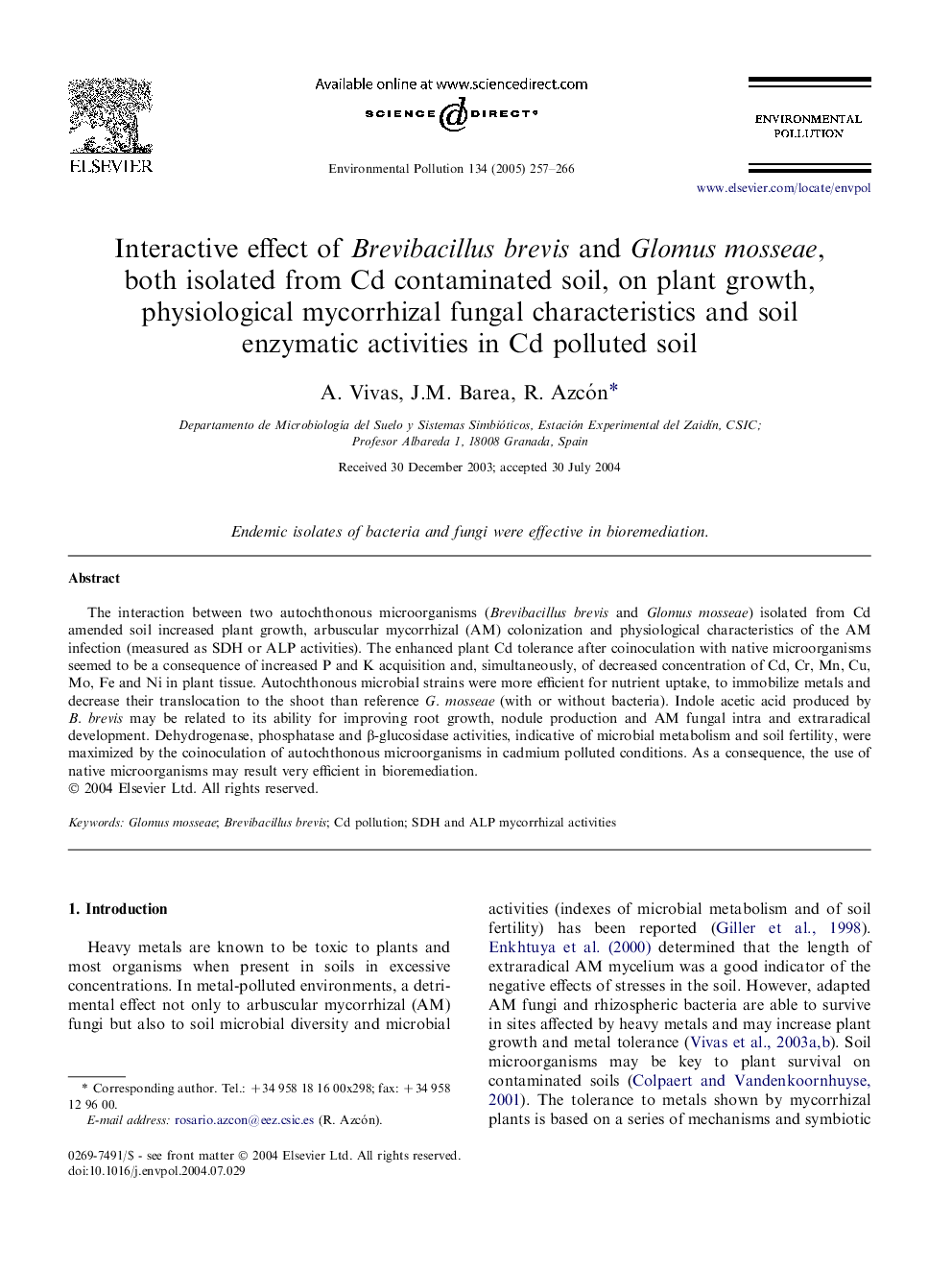| کد مقاله | کد نشریه | سال انتشار | مقاله انگلیسی | نسخه تمام متن |
|---|---|---|---|---|
| 9456575 | 1309203 | 2005 | 10 صفحه PDF | دانلود رایگان |
عنوان انگلیسی مقاله ISI
Interactive effect of Brevibacillus brevis and Glomus mosseae, both isolated from Cd contaminated soil, on plant growth, physiological mycorrhizal fungal characteristics and soil enzymatic activities in Cd polluted soil
دانلود مقاله + سفارش ترجمه
دانلود مقاله ISI انگلیسی
رایگان برای ایرانیان
کلمات کلیدی
موضوعات مرتبط
علوم زیستی و بیوفناوری
علوم محیط زیست
شیمی زیست محیطی
پیش نمایش صفحه اول مقاله

چکیده انگلیسی
The interaction between two autochthonous microorganisms (Brevibacillus brevis and Glomus mosseae) isolated from Cd amended soil increased plant growth, arbuscular mycorrhizal (AM) colonization and physiological characteristics of the AM infection (measured as SDH or ALP activities). The enhanced plant Cd tolerance after coinoculation with native microorganisms seemed to be a consequence of increased P and K acquisition and, simultaneously, of decreased concentration of Cd, Cr, Mn, Cu, Mo, Fe and Ni in plant tissue. Autochthonous microbial strains were more efficient for nutrient uptake, to immobilize metals and decrease their translocation to the shoot than reference G. mosseae (with or without bacteria). Indole acetic acid produced by B. brevis may be related to its ability for improving root growth, nodule production and AM fungal intra and extraradical development. Dehydrogenase, phosphatase and β-glucosidase activities, indicative of microbial metabolism and soil fertility, were maximized by the coinoculation of autochthonous microorganisms in cadmium polluted conditions. As a consequence, the use of native microorganisms may result very efficient in bioremediation.
ناشر
Database: Elsevier - ScienceDirect (ساینس دایرکت)
Journal: Environmental Pollution - Volume 134, Issue 2, March 2005, Pages 257-266
Journal: Environmental Pollution - Volume 134, Issue 2, March 2005, Pages 257-266
نویسندگان
A. Vivas, J.M. Barea, R. Azcón,